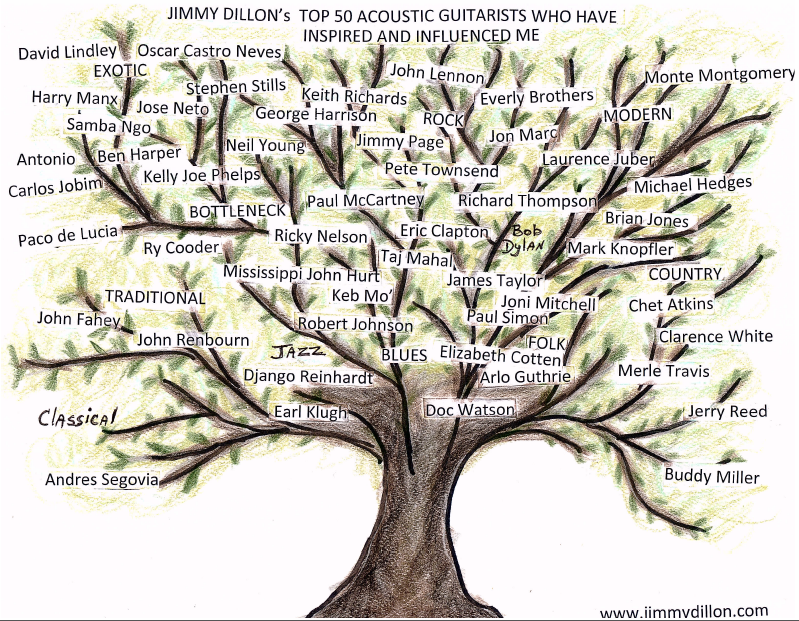So the first pass is going to show you it’s just a
simple descending line. And when I say a descending
line, what do I mean? Well, in the key of G we have
some target notes that I’m going to show you that
explain how you can walk down and connect different
chords. And connecting chords is really important
in the language of guitar, in the language of music
because it’s what puts the spice into it. It really
makes it interesting.
So instead of going from just a G to a C, there’s a
way to utilize open strings and get a flow going with
your playing, and I’m going to show you how that goes.
This first example goes like this. My target notes are
going to be G, F-sharp, E, D and then on the A string
a C, a B and then you jump to a D chord. And here’s a
great passing note here, a low F-sharp. I’ll tell you,
when I learned that D chord with the F-sharp, it was a
great day. A really fat chord, really rich.
Let me just show you that slowly, one more time. Now,
watch how my fingers move here. I’m utilizing my third
finger, starting on a G on the D string. Now, what I’m
doing is I’m letting the other G string ring and this
is really important to note, because ringing out while
you’re doing passing chords, while you’re doing walkdowns
or walkups is a big part of what makes the sound rich and
interesting and chime-y kind of. It really rings out.
So I’m going to do the passage once and then I’m going
to go back and show you how I did it. So it sounds like this.
Now, you’ll notice I’m using my third finger and then
I’m moving my second finger on the D string. Then I’m
using my second finger again on the D string, E note.
You see how my finger has got everything open here? Now,
on that first part of the passage, you should notice
that I’m only using three strings: the D, the G and the
B string. So only those three strings are ringing out
for now. This is a very simple version of it. Very effective.
Now, what you can do is add your pinkie to that third
passage. And then… You see, I’m hitting the D note on
the B string. This is really in two parts. This is your
first part. Notice I’m picking up that D note on the B
string? And then you’ve got your E note on your D string,
your high D note, with your pinkie on the B string.
That’s part one of this lick.
Part two is, your target note is your low C on your A string.
You see how I’m playing a C chord there? That’s the fourth
chord to the progression. And then you move your second
finger and pick-up the B note on the A string, open D and
your C on your B string and your open G. So that’s the second part.
Now, you’ll remember from “Solo Acoustic Guitar” that picking
pattern. Down, down, up, up, down. So here’s what it sounds
like with just the first two parts together. Slowly. See my
target notes. Open D, now to the C, B with the high D, and
now you go to a D chord. Your target note here is your open
D string. Here’s the key note, the low F-sharp.
